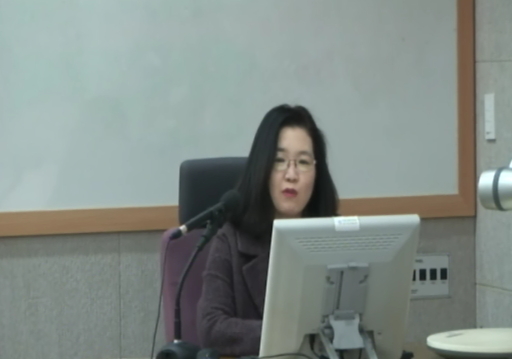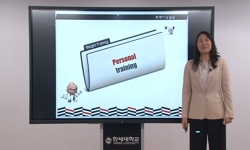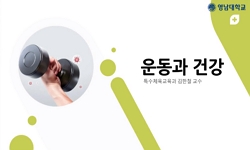Objectives : The physical activity of Korean adolescents and its distribution based on social characteristics have not yet been fully assessed. This study intends to reveal the distribution of physical activity by its subgroups and offer possible expl...
http://chineseinput.net/에서 pinyin(병음)방식으로 중국어를 변환할 수 있습니다.
변환된 중국어를 복사하여 사용하시면 됩니다.
- 中文 을 입력하시려면 zhongwen을 입력하시고 space를누르시면됩니다.
- 北京 을 입력하시려면 beijing을 입력하시고 space를 누르시면 됩니다.


우리나라 청소년의 신체활동과 사회경제적 변수와의 관련성 = Association between the Physical Activity of Korean Adolescents and Socioeconomic Status
한글로보기https://www.riss.kr/link?id=A101438001
-
저자
오인환 (경희대학교) ; 이고은 (경희대학교) ; 오창모 (경희대학교) ; 최경식 (경희대학교) ; 최봉근 (경희대학교) ; 최중명 (경희대학교) ; 윤태영 (경희대학교) ; Oh, In-Hwan ; Lee, Go-Eun ; Oh, Chang-Mo ; Choi, Kyung-Sik ; Choe, Bong-Keun ; Choi, Joong-Myung ; Yoon, Tai-Young
- 발행기관
- 학술지명
- 권호사항
-
발행연도
2009
-
작성언어
Korean
- 주제어
-
등재정보
KCI등재,SCOPUS
-
자료형태
학술저널
- 발행기관 URL
-
수록면
305-314(10쪽)
-
KCI 피인용횟수
10
- 제공처
- 소장기관
-
0
상세조회 -
0
다운로드
부가정보
다국어 초록 (Multilingual Abstract)
Objectives : The physical activity of Korean adolescents and its distribution based on social characteristics have not yet been fully assessed. This study intends to reveal the distribution of physical activity by its subgroups and offer possible explanatory variables. Methods : The 3rd Korea Youth Risk Behavior Web-based Survey was analyzed for this study. The appropriateness of physical activity was defined by Korea s Health Plan 2010 and physical inactivity was assessed independently. Family affluence scale, parents education levels, subjective economic status, grade, and school location were considered explanatory variables. All statistical analysis was conducted using SAS ver. 9.1. Results : The proportion of participants engaging in vigorous physical activity was high in males (41.6%), at a low grade (38.5%), within the high family affluence scale group (35.5%). The distribution of participants engaging in moderate physical activity showed similar patterns, but the overall proportion was lower (9.8%). Low family affluence and students with lower subjective economic status reported a higher prevalence of physical inactivity. In multiple logistic regression analysis for physical activity, significant factors included family affluence scale (p<0.05). For physical inactivity, family affluence scale, parents education levels, and subjective economic status were included as significant factors (p<0.05). Conclusions : The results suggest that the physical activity and inactivity of adolescents may be affected by socioeconomic variables, such as family affluence scale. This implies the need to take proper measures to address these socio-economic inequalities.
참고문헌 (Reference)
1 강영호, "사회경제적 위치에 따른 청소년의 건강과 건강 관련 행태의 차이 : 한국청소년패널 조사 결과" 대한예방의학회 38 (38): 391-400, 2005
2 Eaton DK, "Youth risk behavior surveillance-united states, 2007" 57 (57): 1-131, 2008
3 Boyce W, "The family affluence scale as a measure of national wealth: Validation of an adolescent self-report measure" 78 (78): 473-487, 2006
4 Lee M, "The Korean examination hell : Long hours of studying, distress, and depression" 29 (29): 249-271, 2000
5 Singh-Manoux A, "Subjective social status: Its determinants and its association with measures of ill-health in the Whitehall II study" 56 (56): 1321-1333, 2003
6 Piko BF, "Socioeconomic status, psychosocial health and health behaviours among Hungarian adolescents" 17 (17): 353-360, 2007
7 Demakakos P, "Socioeconomic status and health: The role of subjective social status" 67 (67): 330-340, 2008
8 Hanson MD, "Socioeconomic status and health behaviors in adolescence: A review of the literature" 30 (30): 263-285, 2007
9 von Rueden U, "Socioeconomic determinants of health related quality of life in childhood and adolescence: Results from a European study" 60 (60): 130-135, 2006
10 Starfield B, "Social class gradients in health during adolescence" 56 (56): 354-361, 2002
1 강영호, "사회경제적 위치에 따른 청소년의 건강과 건강 관련 행태의 차이 : 한국청소년패널 조사 결과" 대한예방의학회 38 (38): 391-400, 2005
2 Eaton DK, "Youth risk behavior surveillance-united states, 2007" 57 (57): 1-131, 2008
3 Boyce W, "The family affluence scale as a measure of national wealth: Validation of an adolescent self-report measure" 78 (78): 473-487, 2006
4 Lee M, "The Korean examination hell : Long hours of studying, distress, and depression" 29 (29): 249-271, 2000
5 Singh-Manoux A, "Subjective social status: Its determinants and its association with measures of ill-health in the Whitehall II study" 56 (56): 1321-1333, 2003
6 Piko BF, "Socioeconomic status, psychosocial health and health behaviours among Hungarian adolescents" 17 (17): 353-360, 2007
7 Demakakos P, "Socioeconomic status and health: The role of subjective social status" 67 (67): 330-340, 2008
8 Hanson MD, "Socioeconomic status and health behaviors in adolescence: A review of the literature" 30 (30): 263-285, 2007
9 von Rueden U, "Socioeconomic determinants of health related quality of life in childhood and adolescence: Results from a European study" 60 (60): 130-135, 2006
10 Starfield B, "Social class gradients in health during adolescence" 56 (56): 354-361, 2002
11 Korea National Statistical Office, "Report on the Social Statistics Survey"
12 Robinson TN, "Reducing children s television viewing to prevent obesity a randomized controlled trial" 282 (282): 1561-1567, 1999
13 Mo F, "Physical inactivity and socioeconomic status in Canadian adolescents" 17 (17): 49-56, 2005
14 Torgen M, "Physical capacity in relation to present and past physical load at work: A study of 484 men and women aged 41 to 58 years" 36 (36): 388-400, 1999
15 Van Mechelen W, "Physical activity of young people: The Amsterdam longitudinal growth and health study" 32 (32): 1610-1616, 2000
16 Epstein LH, "Physical activity as a substitute for sedentary behavior in youth" 29 (29): 200-209, 2005
17 Inje University Ilsan Paik Hospital Department of Family Medicine, "Physical activity among Korean adolescents: The results of Korea youth risk behavior web-based survey 2005-2007" 2 (2): 777-780, 2009
18 Coggins A, "Physical Activity and Inequalities: A Briefing Paper" Health Education Authority 1-13, 1999
19 Inchley JC, "Persistent socio-demographic differences in physical activity among Scottish schoolchildren 1990-2002" 15 (15): 386-388, 2005
20 Organisation for Economic Co-operation and Development, "OECD factbook"
21 The Korean Society for Equity in Health, "Methods in Health Inequalities Measurement" Hanul Publishing Company 103-105, 2008
22 Korea Centers for Disease Control and Prevention, "Korean National Health and Nutrition Examination Surveys 2005"
23 Korea Centers for Disease Control and Prevention, "Korea Youth Risk Behavior Web-Based Survey (raw data) and User Manual" 2009
24 Macleod J, "Is subjective social status a more important determinant of health than objective social status? Evidence from a prospective observational study of scottish men" 61 (61): 1916-1929, 2005
25 Currie C, "Inequalities in Young People s Health: HBSC International Report from the 2005/2006 Survey" WHO Regional Office for Europe 105-112, 2008
26 Currie C, "Indicators of Socioeconomic Status for adolescents: The WHO Health Behaviour in School-aged Children Survey" Oxford Univ Press 385-397, 1997
27 Singh GK, "Independent and joint effects of socioeconomic, behavioral, and neighborhood characteristics on physical inactivity and activity levels among US children and adolescents" 33 (33): 206-216, 2008
28 US Department of Health and Human Services, "Healthy people 2010" US Department of Health and Human Services
29 West P, "Health inequalities in the early years: Is there equalisation in youth?" 44 (44): 833-858, 1997
30 West P, "Evidence on equalisation in health in youth from the west of Scotland" 59 (59): 13-27, 2004
31 Ministry for Health, Welfare and Family Affairs, "Establish of New Health Plan 2010" 162-180, 2006
32 Hancox RJ, "Association between child and adolescent television viewing and adult health: A longitudinal birth cohort study" 364 (364): 257-262, 2004
33 Wardle J, "Assessing socioeconomic status in adolescents: The validity of a home affluence scale" 56 (56): 595-599, 2002
34 Lien N, "Adolescents proxy reports of parents socioeconomic status:How valid are they?" 55 (55): 731-737, 2001
35 Kantomaa MT, "Adolescents physical activity in relation to family income and parents education" 44 (44): 410-415, 2007
36 Goodman E, "Adolescents perceptions of social status: Development and evaluation of a new indicator" 108 (108): E31-, 2001
37 Hallal PC, "Adolescent physical activity and health: A systematic review" 36 (36): 1019-1030, 2006
38 Gidlow C, "A systematic review of the relationship between socio-economic position and physical activity" 65 (65): 338-367, 2006
39 US Department of Health and Human Services, "2008 Physical Activity Guidelines for Americans" US Department of Health and Human Services
40 양윤준, "2001 국민건강영양조사에 의한 우리나라 성인의 신체활동도" 대한가정의학회 26 (26): 22-30, 2005
동일학술지(권/호) 다른 논문
-
Associations of Income and Wealth with Health Status in the Korean Elderly
- The Korean Society for Preventive Medicine
- Park, Bo-Hyun
- 2009
- KCI등재,SCOPUS
-
- The Korean Society for Preventive Medicine
- Kim, Jung-Min
- 2009
- KCI등재,SCOPUS
-
Workplace Smoking Ban Policy and Smoking Behavior
- The Korean Society for Preventive Medicine
- Kim, Beom-Soo
- 2009
- KCI등재,SCOPUS
-
- 대한예방의학회
- 김혜연
- 2009
- KCI등재,SCOPUS
분석정보
인용정보 인용지수 설명보기
학술지 이력
| 연월일 | 이력구분 | 이력상세 | 등재구분 |
|---|---|---|---|
| 2023 | 평가예정 | 해외DB학술지평가 신청대상 (해외등재 학술지 평가) | |
| 2020-01-01 | 평가 | 등재학술지 유지 (해외등재 학술지 평가) |  |
| 2010-06-28 | 학술지명변경 | 외국어명 : The Korean Journal of Preventive Medicine -> Journal of Preventive Medicine and Public Health |  |
| 2010-01-01 | 평가 | 등재학술지 유지 (등재유지) |  |
| 2008-01-01 | 평가 | 등재학술지 유지 (등재유지) |  |
| 2006-01-01 | 평가 | 등재학술지 유지 (등재유지) |  |
| 2004-01-01 | 평가 | 등재학술지 유지 (등재유지) |  |
| 2001-01-01 | 평가 | 등재학술지 선정 (등재후보2차) |  |
| 1998-07-01 | 평가 | 등재후보학술지 선정 (신규평가) |  |
학술지 인용정보
| 기준연도 | WOS-KCI 통합IF(2년) | KCIF(2년) | KCIF(3년) |
|---|---|---|---|
| 2016 | 0.3 | 0.3 | 0.39 |
| KCIF(4년) | KCIF(5년) | 중심성지수(3년) | 즉시성지수 |
| 0.31 | 0.32 | 0.784 | 0.13 |




 ScienceON
ScienceON






